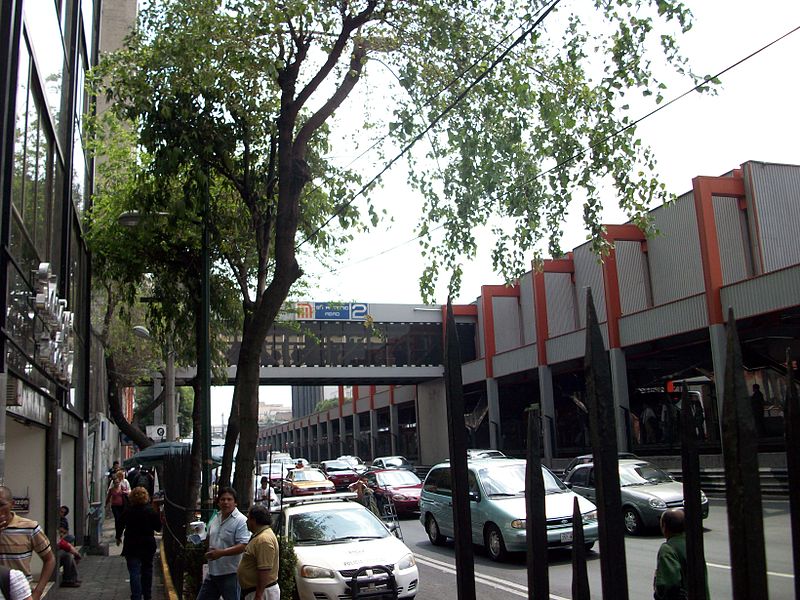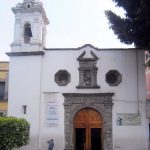
_
 Metro San Antonio Abad is the first surface level station on Metro Line 2’s turn south after the city center. Conversely, it’s also the last surface level station for those traveling north in the other direction. Either, it’s a station important for a slew of government and judicial buildings, almost like those at Metro Niños Heroes, which is about a 25-minute walk almost directly west. (You’ll cross Metro Line 8 along the way.)
Metro San Antonio Abad is the first surface level station on Metro Line 2’s turn south after the city center. Conversely, it’s also the last surface level station for those traveling north in the other direction. Either, it’s a station important for a slew of government and judicial buildings, almost like those at Metro Niños Heroes, which is about a 25-minute walk almost directly west. (You’ll cross Metro Line 8 along the way.)
This station takes it’s name from the Calzada San Antonio Abad which is the first leg of the longer Calzada de Tlalpan. The causeway (i.e.; calzada) was named for the old Temple and Hospital of San Antonio Abad. The main building from the 17th century (some parts are from the 16th) is not open to the public. It began as a small hermitage in 1530. Followers of San Antonio took over in 1628, and they started the hospital. Their monastery and hospital lasted until 1789. Thereafter, the building was used as a textile factory. The industry is, even today though in much diminished numbers, prevalent throughout the area.
Saint Anthony Abad (251-356 CE) is considered the founder of the hermitage movement. His followers lead lives of Christian piety with little or no possessions and often almost no contact with the outside world.
Metro San Antonio Abad is not particularly well well-visited by international visitors. In addition to the giant San Antonio Abad former monastery complex, there are a number of sites worth mentioning. The more than 100-year-old Gala commercial printing company is just outside the station. They’re generally credited with having printed most of the calendars used in Latin America for much of their history. The Santa Cruz Acatlán in the Transito neighborhood is a bit further north, but well worth a look.
 unidad_de_orientacion@metro.cdmx.gob.mx
unidad_de_orientacion@metro.cdmx.gob.mx
 5627.4950/5627.4741
5627.4950/5627.4741
 https://www.metro.cdmx.gob.mx/
https://www.metro.cdmx.gob.mx/

0.77 kms.

0.94 kms.

As park's go, few are as dramatically set-off by a single mural like this one.

The heart of la Magdalena, the market's a great place to eat in a classic mountain town.

Metro La Raza has been defined, like its entire neighborhood, by a curious monument just to the south.

One of the busiest stations on the old Tlalpan Causeway, Xola can teach you a thing or two.

One of the most often mentioned of the city's gourmet markets, this one is bedecked in outstanding murals.